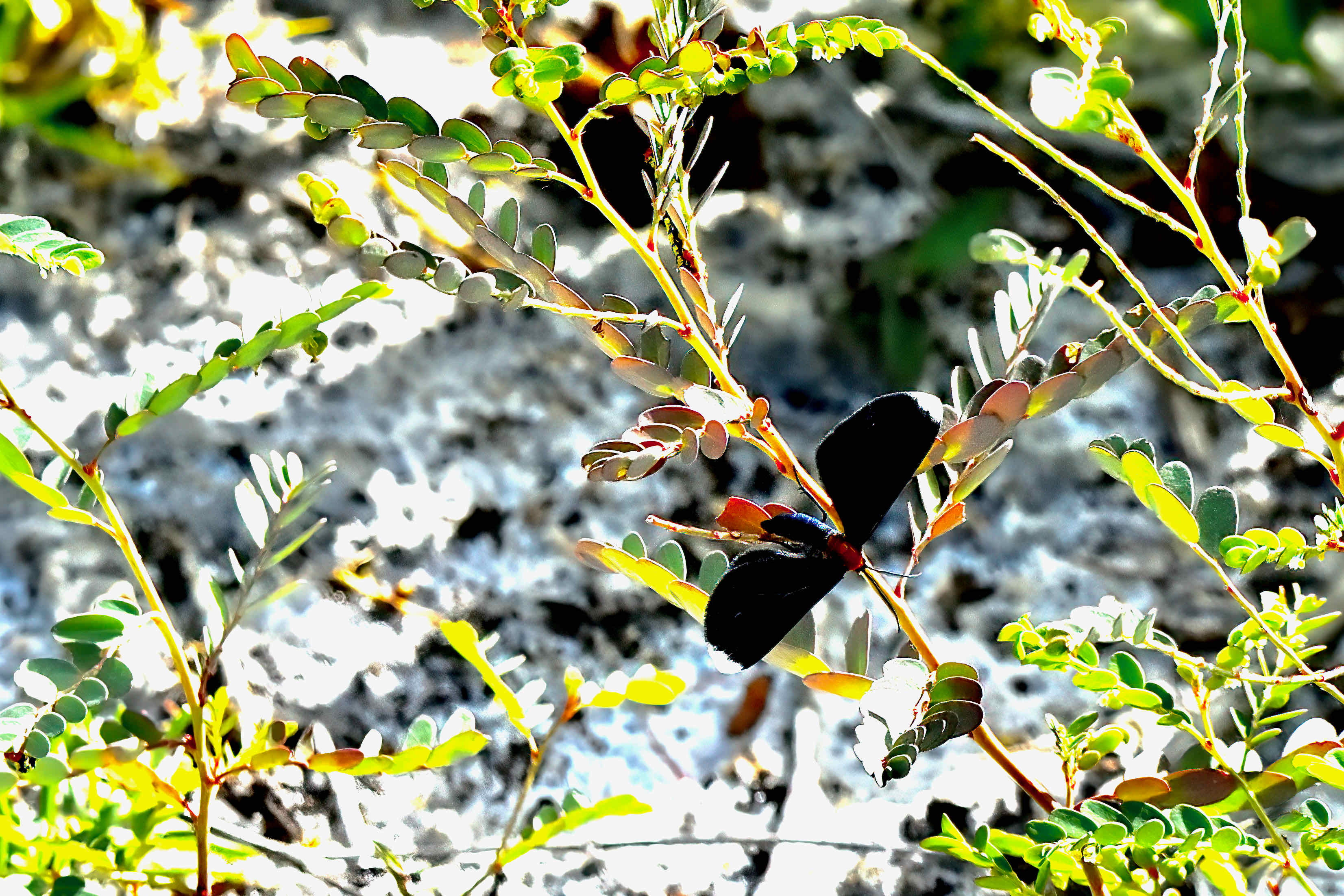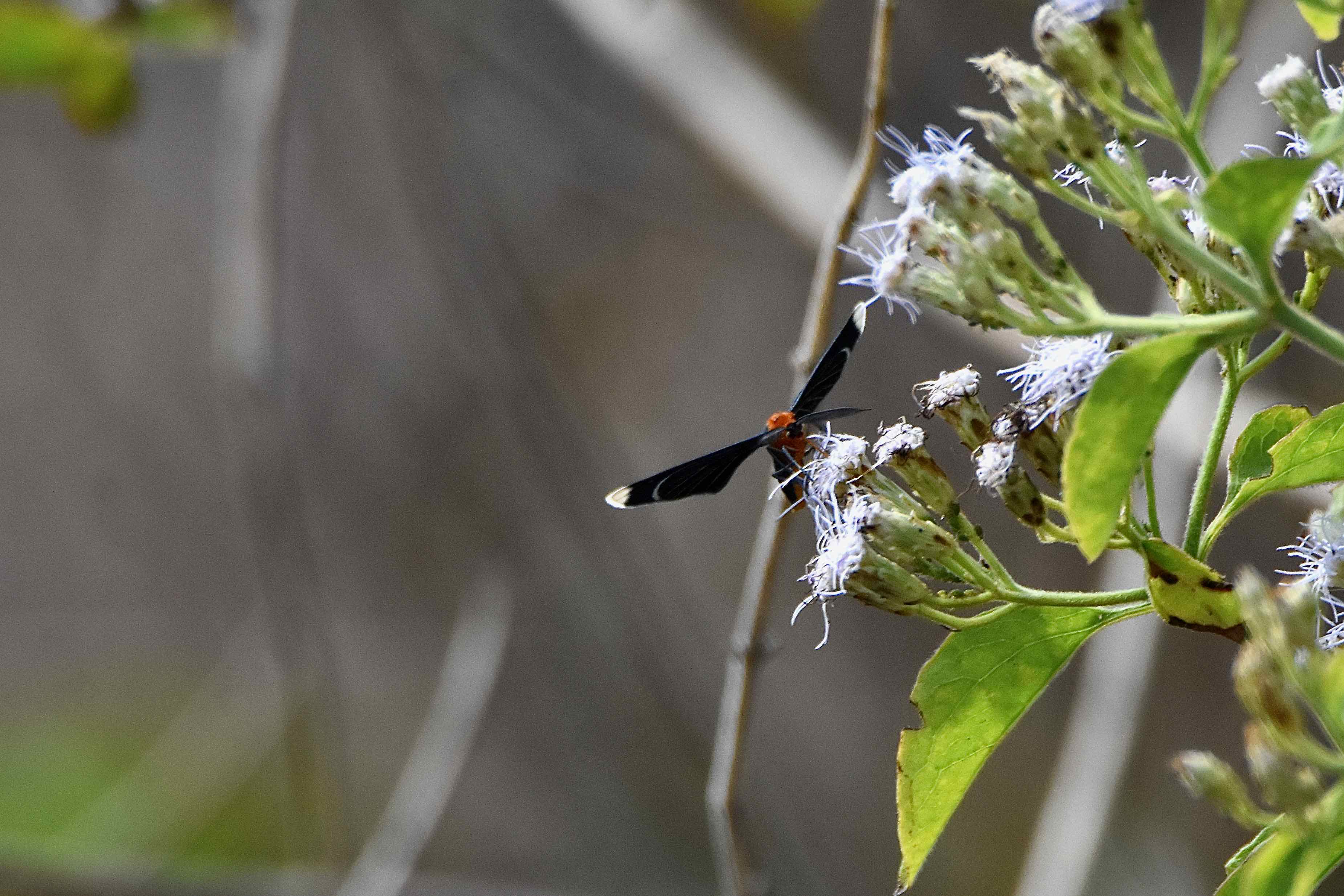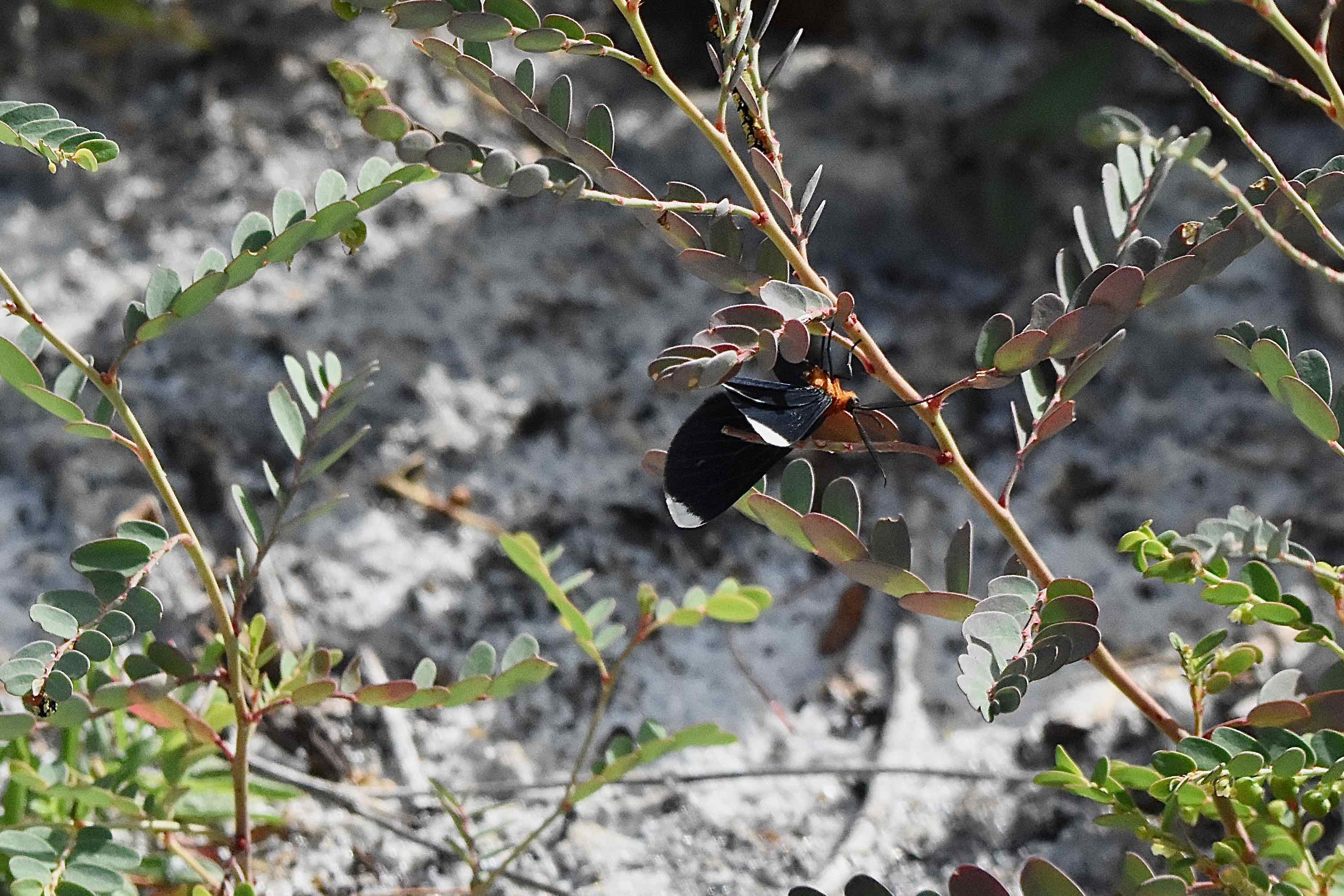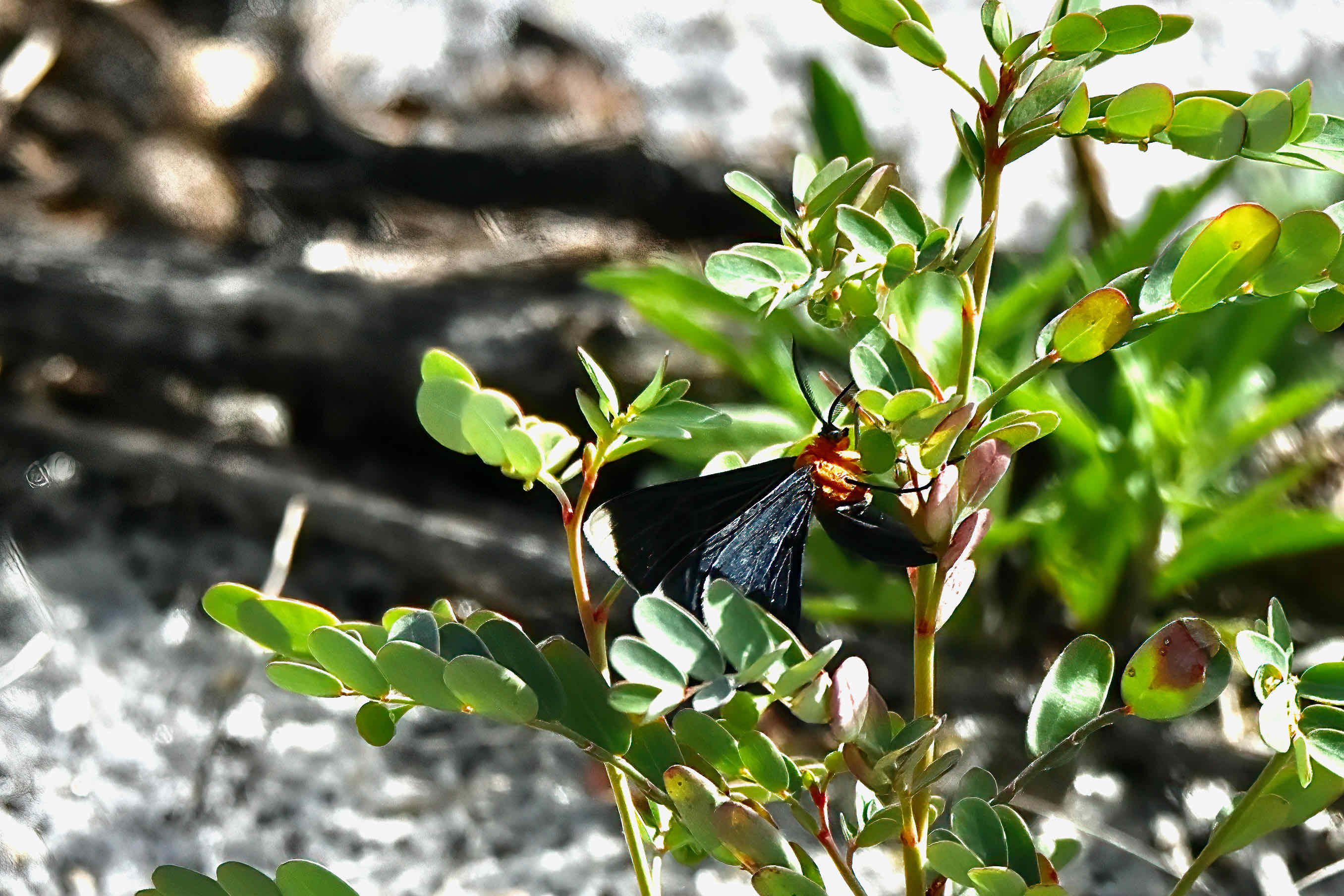
White-tipped black moth, photographed at Yamato Scrub Natural Area, Boca Raton, Palm Beach County, in March 2017.
One look will tell you that the white-tipped black moth, Melanchroia chephise, isn't your typical moth. For one thing, it has a splash of color rather than the usual assortment of drab browns. Secondly, it's out and about in broad daylight.
And one more thing: it's better know as a caterpillar, the snowbush spanworm, than it is as an adult.
The white-tipped black moth can be found regularly in Texas and Florida, through Mexico, parts of the Caribbean, including the Caymans, Jamaica, Antigua and Guadalope, into Central America and South America as far south as Paraguay. It's been known to stray as far west as Arizona and Utah and as far north as Oklahoma, Arkansas, Kansas and Illinois.
In Florida, it can be found in just about every county and active throughout the year. When strays farther north, it's usually limited to late summer and early fall.
As we said, the white-tipped black moth is a diurnal creature, one of the few moths that are active during daylight hours. It has a bright orange head and thorax, two pairs of dark wings, each of which has white edges that give the moth its name. The wings can vary from black to dark blue. It has prominent veining that can give the wings a grayish look to them. Their wingspan is about an inch.
The combination makes the white-tipped black distinctive looking, even pretty to some eyes. Thing is, if you don't know what you're looking at you might not think of it as a moth at all. But a close look reveals the fuzzy antennae typical of moths (seen in the bottom photos, especially with full enlargement — double click them).
Females lay eggs individually, usually at the base of a leaf. Favorite hosts include snowbush, white sapote, otaheite gooseberry and snow-on-the-mountain. Newly hatched caterpillars are a fraction of an inch long and have voracious appetites, eventually growing to about an inch right before their pupa stage.
The caterpillars are bright yellow and black and have a looping style of walking, inch-worm style. They have fewer abdominal legs than most caterpillers, so they stretch out their bodies, then pull in the rear. Imagine a slinky going down a set of stairs.
If the caterpillers occur in sufficent numbers, they can strip a small tree. Normally the foliage will grow back, but if the numbers are heavy and predators are lacking, they' might eat the bark and kill the host. Usually, they just give the host what amounts to a light pruning. Handpicking will keep the population under control — we've seen suggestions of shaking trees to get them to drop — but there are insecticidal soaps that will get rid of the worms without widespread killing of other insects. After fully maturing as catepillars, they will enter the ground, pupate in about a week and then emerge as adult white-tipped blacks. Sometimes, they'll also pupate in the tree or shrub, wrapping themselves up in dead leaves.
The white-tipped black moth is a member of Geometridae, the family of inchworms. Other common names include inchworm moth, duppy bush moth and white-tipped black. Also spelled white-tipped.



